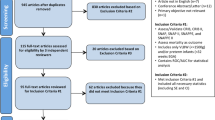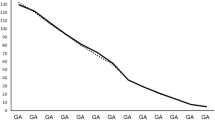Abstract
Objective:
To determine the predictive value of (1) maternal, (2) maturational, (3) comorbid and (4) discharge domains associated with preterm infant rehospitalization.
Study Design:
Retrospective, cohort study of preterm infants discharged home from a level IV neonatal intensive care unit. Rates of unplanned and planned 6-month readmissions were assessed. The four domains were modeled incrementally and separately to predict relative and combined contributions to the readmission risk.
Result:
Out of 504 infants, 5% had 30-day readmissions (22 unplanned, three planned). By 6 months, 13% were rehospitalized (52 unplanned, 15 planned). Sixty-seven infants had 96 readmission events with 30% of readmission events elective. The four domains together predicted 78% of total 1-month, all 6-month and unplanned 6-month readmissions. Discharge complexity was as predictive as comorbidity in all models.
Conclusion:
These four-domain models were more predictive than single domains. Many total readmission events were planned, suggesting parsing planned and unplanned rehospitalizations may benefit quality-improvement efforts.
This is a preview of subscription content, access via your institution
Access options
Subscribe to this journal
Receive 12 print issues and online access
$259.00 per year
only $21.58 per issue
Buy this article
- Purchase on Springer Link
- Instant access to full article PDF
Prices may be subject to local taxes which are calculated during checkout
Similar content being viewed by others
References
Petrou S, Mehta Z, Hockley C, Cook-Mozaffari P, Henderson J, Goldacre M . The impact of preterm birth on hospital inpatient admissions and costs during the first 5 years of life. Pediatrics 2003; 112: 1290–1297.
Escobar GJ, Joffe S, Gardner MN, Armstrong MA, Folck BF, Carpenter DM . Rehospitalization in the first two weeks after discharge from the neonatal intensive care unit. Pediatrics 1999; 104: 1–9.
Ambalavanan N, Carlo WA, McDonald SA, Yao Q, Das A, Higgins RD . Identification of extremely premature infants at high risk of rehospitalization. Pediatrics 2011; 128: e1216–e1225.
Ralser E, Mueller W, Haberland C, Fink FN, Gutenberger KH, Strobl R et al. Rehospitalization in the first 2 years of life in children born preterm. Acta Paediatr 2012; 101: e1–e5.
Morris BH, Gard CC, Kennedy K . Rehospitalization of extremely low birth weight (ELBW) infants: are there racial/ ethnic disparities? J Perinatol 2005; 25: 656–663.
Vohr BR, Yatchmink YE, Burke RT, Stephens BE, Cavanaugh EC, Alksninis B et al. Factors associated with rehospitalizations of very low birthweight infants: impact of a transition home support and education program. Early Hum Dev 2012; 88: 455–460.
Martens PJ, Derksen S, Gupta S . Predictors of hospital rehospitalization of Manitoba newborns within six weeks postbirth discharge: a population-based study. Pediatrics 2004; 114: 708–713.
Lamarche-Vadel A, Blondel B, Truffert P, Burguet A, Cambonie G, Selton D et al. Re-hospitalization in infants younger than 29 weeks’ gestation in the EPIPAGE cohort. Acta Paediatr 2004; 93: 1340–1345.
Stephens BE, Tucker R, Vohr BR . Special health care needs of infants born at the limits of viability. Pediatrics 2010; 125: 1152–1158.
Elder DE, Hagan R, Evans SF, Benninger HR, French NP . Hospital admissions in the first year of life in very preterm infants. J Paediatr Child Health 1999; 35: 145–150.
Oddie SJ, Hammal D, Richmond S, Parker L . Early discharge and readmission to hospital in the first month of life in the Northern Region of the UK during 1998: a case cohort study. Arch Dis Child 2005; 90: 119–124.
Tseng YH, Chen CW, Huang HL, Chen CC, Lee MD, Ko MC et al. Incidence of and predictors for short-term rehospitalization among preterm low-birthweight infants. Pediatr Int 2010; 52: 711–717.
Paranjothy S, Dunstan F, Watkins WJ, Hyatt M, Demmler JC, Lyons RA et al. Gestational age, birth weight, and risk of respiratory hospital admission in childhood. Pediatrics 2013; 132: e1562–e1569.
Chen E, Martin AD, Matthews KA . Trajectories of socioeconomic status across children’s lifetime predict health. Pediatrics 2007; 120: e297–e303.
Bell EF . American Academy of Pediatrics Committee on Fetus and Newborn. Hospital discharge of the high-risk neonate. Pediatrics 2008; 122: 1119–1126.
Darnall RA, Kattwinkel J, Nattie C, Robinson M . Margin of safety for discharge after apnea in preterm infants. Pediatrics 1997; 100: 795–801.
Bakewell-Sachs S, Medoff-Cooper B, Escobar GJ, Silber JH, Lorch SA . Infant functional status: the timing of physiologic maturation of premature infants. Pediatrics 2009; 123: e878–e886.
Amaizu N, Shulman RJ, Schanler RJ, Lau C . Maturation of oral feeding skills in preterm infants. Acta Paediatr 2008; 97: 61–67.
Eichenwald EC, Blackwell M, Lloyd JS, Tran T, Wilker RE, Richardson DK . Inter-neonatal intensive care unit variation in discharge timing: influence of apnea and feeding management. Pediatrics 2001; 108: 928–933.
Krumholz HM . Post-hospital syndrome—an acquired, transient condition of generalized risk. N Engl J Med 2013; 368: 100–102.
Marks E . Complexity science and the readmission dilemma. JAMA Intern Med 2013; 173: 629–631.
Van Walraven C, Dhalla IA, Bell C, Etchells E, Stiell IG, Zarnke K et al. Derivation and validation of an index to predict early death or unplanned readmission after discharge from hospital to the community. CMAJ 2010; 182: 551–557.
Donzé J, Aujesky D, Williams D, Schnipper JL . Potentially avoidable 30-day hospital readmissions in medical patients: derivation and validation of a prediction model. JAMA Intern Med 2013; 173: 632–638.
Garrison GM, Mansukhani MP, Bohn B . Predictors of thirty-day readmission among hospitalized family medicine patients. J Am Board Fam Med 2013; 26: 71–77.
Smith VC, Young S, Pursley DM, McCormick MC, Zupancic JA . Are families prepared for discharge from the NICU? J Perinatol 2009; 29: 623–629.
Smith VC, Hwang SS, Dukhovny D, Young S, Pursley DM . Neonatal intensive care unit discharge preparation, family readiness, and infant outcomes: connecting the dots. J Perinatol 2013; 33: 415–421.
Lindenauer PK, Lagu T, Rothberg MB, Avrunin J, Pekow PS, Wang Y et al. Income inequality and 30-day outcomes after acute myocardial infarction, heart failure, and pneumonia: retrospective cohort study. BMJ 2013; 346: f521.
Bratzler DW, Normand ST, Wang Y, O’Donnell WJ, Metersky M, Han LF et al. An administrative claims model for profiling hospital 30-day mortality rates for pneumonia patients. PloS ONE 2011; 6: e17401.
Kennan PS, Normand ST, Lin Z, Drye EE, Bhat KR, Ross JS et al. An administrative claims measure suitable for profiling hospital performance on the basis of 30-day all-causes readmission rates among patients with heart failure. Circ Cardiovasc Qual Outcomes 2008; 1: 29–37.
South AP, Wessel JJ, Sberna A, Patel M, Morrow AL . Hospital rehospitalization among infants with gastroschisis. J Perinatol 2011; 31: 546–550.
Centers for Medicare and Medicaid Services, Acute Inpatient Prospective Payment System. Readmissions Reduction Program. Available at: http://www.cms.gov/Medicare/Medicare-Fee-for-Service-Payment/AcuteInpatientPPS/index.html (accessed 15 September 2015).
Fenton TR . A new growth chart for preterm babies: Babson and Benda's chart updated with recent data and a new format. BMC Pediatr 2003; 3: 13.
Jobe AH, Bancalari E . Bronchopulmonary dysplasia. Am J Respir Crit Care Med 2001; 163: 1723–1729.
Walsh MC, Kliegman RM . Necrotizing enterocolitis: treatment based on staging criteria. Pediatr Clin North Am 1986; 33: 179–201.
Cotten CM, Taylor S, Stoll B, Goldberg RN, Hansen NI, Sanchez PJ et al. Prolonged duration of initial empirical antibiotic treatment is associated with increased rates of necrotizing enterocolitis and death for extremely low birth weight infants. Pediatrics 2009; 123: 58–66.
Kuppala VS, Meinzen-Derr J, Morrow AL, Schibler KR . Prolonged initial empirical antibiotic treatment is associated with adverse outcomes in premature infants. J Pediatr 2011; 159: 720–725.
Papile LA, Burstein J, Burstein R, Koffler H . Incidence and evolution of subependymal and intraventricular hemorrhage: a study of infants with birth weights less than 1,500 gm. J Pediatr 1978; 92: 529–534.
Hoffman LA, Tasota FJ, Scharfenberg C, Zullo TG, Donahoe MP . Management of patients in the intensive care unit: comparison via work sampling analysis of an acute care nurse practitioner and physicians in training. Am J Crit Care 2003; 12: 436–443.
Cleves MA . From the help desk: Comparing areas under receiver operating characteristic curves from two or more probit or logit models. Stata J 2002; 2: 301–313.
Pepe Margaret S . The Statistical Evaluation of Medical Tests for Classification and Prediction. Oxford University Press: New York, 2003.
Harrell FE, Lee KL, Mark DB . Multivariable prognostic models: issues in developing models, evaluating assumptions and adequacy, and measuring and reducing errors. Stat Med 1996; 15: 361–387.
Escobar GJ, Greene JD, Hulac P, Kincannon E, Bischoff K, Gardner MN et al. Rehospitalisation after birth hospitalisation: patterns among infants of all gestations. Arch Dis Child 2005; 90: 125–131.
Alverson BK, O’Callaghan J . Hospital readmission: quality indicator or statistical inevitability? Pediatrics 2013; 132: 569–570.
Hansen LO, Young RS, Hinami K, Leung A, Williams MV . Interventions to reduce 30-day rehospitalization: a systematic review. Ann Intern Med 2011; 155: 520–528.
Fontanarosa PB, McNutt R . Revisiting hospital readmissions. JAMA 2013; 309: 398–400.
Stang AS, Straus SE, Crotts J, Johnson DW, Guttmann A . Quality indicators for high acuity pediatric conditions. Pediatrics 2013; 132: 752–762.
Gäddlin PO, Finnström O, Hellgren K, Leijon I . Hospital readmissions and morbidity in a fifteen-year follow-up of very low birthweight children in Southeast Sweden. Acta Pediatr 2007; 96: 499–505.
Hack M, DeMonterice D, Merkatz IR, Jones P, Fanaroff AA . Rehospitalization of the very-low-birth-weight infant: a continuum of perinatal and environmental morbidity. Am J Dis Child 1981; 135: 263–266.
U.S. Department of Health and Human Services Health Resources and Services Administration. The Maternal and Child Health Federal-State Partnership: New York. Available at: https://mchdata.hrsa.gov/tvisreports/Snapshot/snapshot.aspx?statecode=NY (accesse 15 September 2015).
Acknowledgements
We thank Sergio Golombek, MD, MPH, Joshua C Brumberg, PhD and Stephan Brumberg, EdD for helpful discussions and comments on the manuscript. We also thank Yin Tong, BS, Janine Lebofwsky, BS and Sumith Roy, MD for assistance with data collection.
Author information
Authors and Affiliations
Corresponding author
Ethics declarations
Competing interests
The authors declare no conflict of interest.
Rights and permissions
About this article
Cite this article
Schell, S., Kase, J., Parvez, B. et al. Maturational, comorbid, maternal and discharge domain impact on preterm rehospitalizations: a comparison of planned and unplanned rehospitalizations. J Perinatol 36, 317–324 (2016). https://doi.org/10.1038/jp.2015.194
Received:
Revised:
Accepted:
Published:
Issue Date:
DOI: https://doi.org/10.1038/jp.2015.194
This article is cited by
-
Ensuring the care for our youngest graduates with medically complex conditions
Pediatric Research (2019)
-
Toward development of evidenced-based quality parameters: What gets counted and who gets paid?
Pediatric Research (2016)
-
Predictions of the affordable care act’s impact on neonatal practice
Journal of Perinatology (2016)



